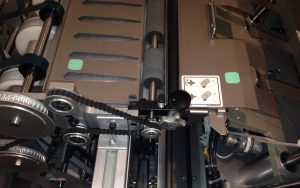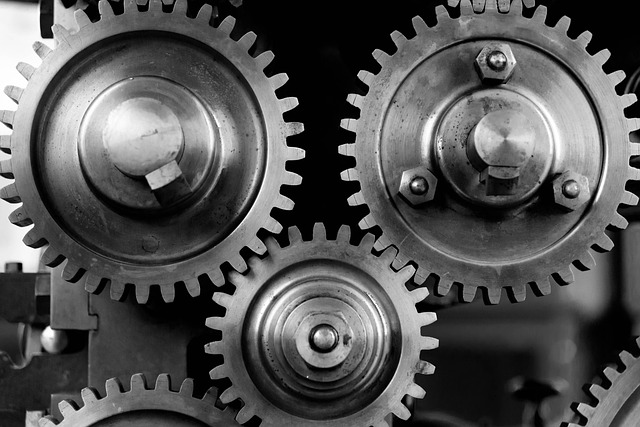These three-phase permanent magnet synchronous motors are becoming very important in modern power transmission and control systems, serving as the key actuators to drive efficiency and precision across a wide array of applications. Consequently, advanced motors gained wide recognition and found wide acceptance in driving important breakthroughs and adoptions in many industries due to excellent characteristics of efficiency, high power density, precise control, and reliable operation.
Their role is also played out in permanent magnet synchronous three-phase motors in applications of several kinds. In this kind of motor, the loss in electrical energy conversion into mechanical is less and hence finds a wide scope of application in energy-sensitive environments. Based on that fact, they show high efficiency for these applications, which range from industrial automation, electric vehicles to renewable energy systems wherein energy conservation along with a saving in operational costs is kept fore-front.
With increased power density and compactness, three-phase permanent magnet synchronous motors are becoming increasingly versatile and capable in applications. The motors are designed to ensure that a large quantity of power is availed using minimum space. This makes them ideal for application in areas where space constraint is a critical consideration. Such an attribute is especially valuable in the aerospace and automotive industries, where maximization of power output with minimization of weight and volume is intended.
Other specific, very distinctive signature characteristics include preattempt control in the case of three-phase permanent magnet synchronous motors. With such sophistication in capability on the controller, governance could be related to speed, torque, position, or either at high accuracy. They are irreplacable, therefore, in applications that demand high precision and response-such as robot systems, CNC machinery, and all forms of industrial automation. In these applications, improved precision of motor performance is associated with better performances and greater quality and quantity of production.
Indeed, probably the most distinguishing single factor in reliability that exists between three-phase permanent magnet synchronous motors and other technologies is their reliability. Of course, with rugged construction, the motors will run in a very stable manner for many years with reduced maintenance. This reliability is fundamental to mission-critical applications in medical devices, aerospace systems, and critical infrastructures where operation should be consistent and dependably operated.
It is important to highlight that this field of professionals in three-phase Permanent Magnet Synchronous Motors concerns activities regarding engineering design with regard to product selection and system integration. It involves profound knowledge in the area of three-phase PMSM motor technology proper in selection for an application in view of desired performance and efficiency assurance. With these characteristics, an integrated system must be very careful in integrating three-phase permanent magnet synchronous motors to fully realize its benefits and allow it to work seamlessly in a complex control system.

The permanent magnet synchronous motor is a class of AC motor whose rotor is made of permanent magnets. It is higher in efficiency, smaller in size, and higher in power density compared to other classes of motors. Its operation is based on the interlinking between the permanent magnets and the revolving magnetic field developed in the stator.
Structure
A three-phase permanent magnet synchronous motor consists of a rotor, stator, and end caps. It consists of a rotor with permanent magnets wrapped by the stator. The stator contains three windings that lie at right angles to each other. Each is connected to one phase of power. When turned on, a rotating magnetic field is developed in the stator. The frequency of this rotating magnetic field is the same as that of the power supply frequency while the rotational speed depends upon the product of the power supply frequency with a number of pole pairs. Working Principle The working principle for three-phase permanent magnet synchronous motors relies on an interaction of the permanent magnets and the stator. A rotating magnetic field will be set up in the stator when the power supply is energized. The presence of the permanent magnets will induce an electric potential in the stator, and this again creates a rotating magnetic field on the stator. Both the rotating magnetic fields rotate at the same speed and hence will interact and cause the rotor to start its rotation.
Excellent performance features make the three-phase permanent magnet synchronous motor an indispensable device in a wide variety of applications within power transmission and control systems. This paper intends to present the main performance characteristics of three-phase permanent-magnet synchronous motors. High Efficiency
Permanent magnet synchronous motors make their rotors of permanent magnets, hence their high efficiency. Besides, the permanent magnet synchronous motors reduce the copper loss and rotor iron loss when compared to induction motors, and the magnetic material of permanent magnet synchronous motors is usually more stable at high temperature. Thus, permanent magnet synchronous motors have their efficiencies higher and heat losses smaller.
High power density
The permanent magnet synchronous motors have small size and high power density. The rotor is permanent magnets; hence, higher magnetic field strengths can be obtained. Small sizes of the rotor may thus be implemented. In this way, these kinds of permanent magnet synchronous motors can be fitted for space-limited applications.
High Precision
It can also be very precisely controlled because the set current and voltage are accurate. As such, the speed and torque can be accurately controlled in position. Thus, permanent magnet synchronous motors have been applied widely in the places where high precision is required, such as in industrial automation. Response Speed
Since the permanent magnet synchronous motors have permanent magnets as their rotors, it gives them a lower moment of inertia and hence faster response times. Permanent magnet synchronous motors are, therefore, suitable for applications requiring instant accelerations and deceleration.
Low no-load losses
The no-load loss of a permanent magnet synchronous motor is smaller compared to the induction motor. That is because a permanent magnet rotor has only permanent magnets without any current induction and, therefore, no inductive losses. Based on that, permanent magnet synchronous motors are capable of high efficiency at light and even without load operation.

Selection of a three-phase permanent magnet synchronous motor depends on many important factors that include but are not limited to the following: motor power, speed, materials, manufacturing process, and so on.
Motor Power
Power is an important parameter of the motor, used to determine the maximum output power of the motor and the applicable scene. When choosing a three-phase permanent magnet synchronous motor, based on actual needs, one needs to choose the range of motor power first, then determine the type and parameters of the motor. Speed of Motor
The other important factor of selection is the motor speed. Various application conditions determine the motor speed is different, according to the actual requirement of ascertaining what speed range the motor has and select type and parameter of the motor. Motor Material
The other important aspect that forms the base for designing and choice of the motor is the material of the motor, since it impacts directly on performance and service life. Among the regular materials that make up the motor include, among others, copper wire, magnets, and insulation materials. Manufacturing a three-phase Permanent Magnet Synchronous Motor calls for the choice of appropriate selection of motor material. Besides that, there has to be in place a technological condition and taking into account quality measures.
Production process
Manufacturing technology: The ordinary manufacturing processes include winding, pole processing, assembly, and so on. While purchasing three-phase permanent magnet synchronous motors, appropriate manufacturing processes and quality inspection measures must be adopted to ensure the performance and quality of motors meet the requirements.
From a technical point of view, three-phase permanent magnet synchronous motors will be continuously improved and upgraded in design and in production technology in the future. New material contributors, like the new magnetic materials developed lately, contribute to the improvement in performance and prolong the service life of motors. The improvement in the technology related to motor control can provide more precision with higher efficiency. Further improvement in the motor sensor technology improves the measuring and controlling precision of the motor.
From an application point of view, the three-phase PMSMs will be further expanded in scope and depth of application. Three-phase PMSM application in industrial automation will keep expanding, for example, belt conveyors and textile machines. In the future, the three-phase permanent magnet synchronous motors will be more effective, precise, and reliable and contribute much better solutions to all industries.